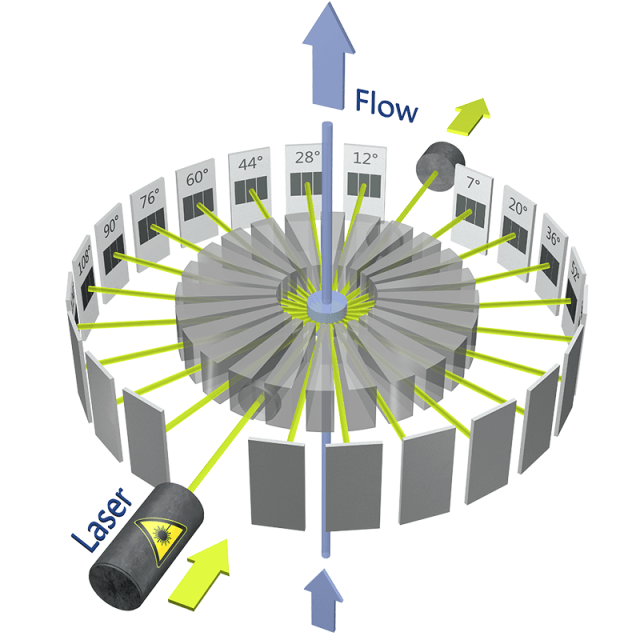Postnova is a top innovator and developer of special advanced online light scattering solutions for coupling with chromatographic separation systems. The company has been in operation since the 1990s.
Their initial product was the PD2000 - static light scattering detector for coupling with Asymmetric Flow FFF. Soon PN3020 SLS and PN3070 MALS were introduced into the market. Postnova has 20 years of expertise in the field of laser light scattering, and they have now designed the innovative PN3621 MALS - multi-angle light scattering detector series. This model is a new high performance MALS detector system with a unique range of specifications.
Maximum Angle Number
The Postnova PN3621 MALS detector system is designed with full 21 angles and has the widest angular range of any light scattering instrument available in the market today. The 21 angles are critical to meet the high demands set for accuracy for measuring complex particular samples, thus ensuring maximum precision in particle size and molecular weight determination.
Using the 21 angles the PN3621 can realize maximum quality data fit for the most scientifically significant results in the laboratory, especially for large particles and high molar mass polymers.
Unique Low Angle Range
The precision of molar mass and particles size determination depends on the number of angles as well as the number of low angles which are provided for calculation.
The angles from 0° to 35° are the most vital angles for exact and precise molar mass and size determination. In the past, static light scattering has been frequently restricted in use as low angles have either not been available or, when available, did not work correctly.
The lack of low angles can be endured while analyzing smaller species, such as macromolecules or proteins as angular intensity dependence is not there. However, for larger and more complex samples, such as high molar mass macromolecules, large protein aggregates, branched polymers, and nanoparticles, high quality low angles are vital for precision and accuracy.
The new Postnova PN3621 MALS surpasses these restrictions and offers a comprehensive set of stable working low angles, starting from 7°, 12°, 20° and 28° onwards.
Clean Vertical Flow Cell
MALS is often used to measure larger sample species, such as high molar mass macromolecules, protein aggregates, and particles. Due to their size and delicate nature, these samples have to be treated mildly to avoid any alteration. Potentially shear forces, conformational changes, chain degradation, and deterioration or total loss of bioactivity can be induced by very turbulent light scattering cells.
Adsorption, aggregation, and sedimentation phenomena can result in trouble inside light scattering cells, especially when they have dead volumes, edges or right angle flow path changes inside. The Postnova PN3621 surpasses all of these limitations and provides a vertical flow cell where the sample can pass though easily. The flow cell does not have a right angle entry or outlets that could induce shear forces or cause particles to adsorb and settle.
Advanced Electro Optics
The PN3621 MALS utilizes advanced opto-electronic designs, including digital signal processing for each of the 21 angles. The electronics is based on a true 24 bit resolution AD system and provides a wide dynamic signal range.
For the highest flexibility it is possible to read-in up to three external analogue signals. The PN3621 has the smallest footprint in the market, saving precious lab space and allowing its use at different locations. The system also seamlessly fits into other Postnova products, such as the PN3150 refractive index detector.
Applications
- Biotechnology: Alginates, hyaluronic acids, carrageenans, cell organelles, exosomes
- Food and agro science: Starches, pectins, casein micelles, polysaccharides, proteins
- Biopharmaceutical: Peptide, antibody, virus aggregates, protein, and conjugates
- Polymer science: Rubbers, polyolefins, latex dispersions, polyelectrolytes
- Nanotechnology: TiO2, C60, latex, CNT, silica nanoparticles, and ZnO nanoparticles
- Environmental research: Humic-Fulvic colloids, clays, iron oxides, silica particles

PN3621 MALS Principle
